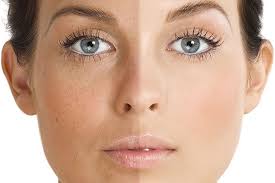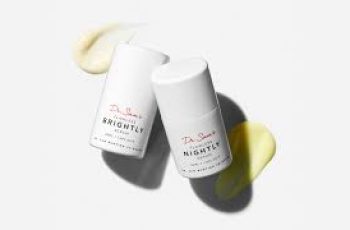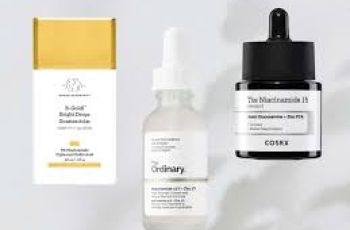How to Improve Uneven Skin Tone
Uneven skin tone can be an issue many of us face. It’s very easy to get, but luckily, there are several ways to improve the overall appearance of your skin. Here’s more information on uneven skin tone, its causes, and treatment options to prevent it from becoming a bigger problem.
What is Uneven Skin Tone?
Uneven skin tone, also known as hyperpigmentation, comes in many forms:
Dark spots
Redness
Acne scars
Discoloration on the skin
Age spots
Some blemishes
These areas of uneven skin tone are caused by an excess of melanin (the pigment in your skin and hair is produced by melanin) and can damage your skin without you realizing it’s being damaged. For example, if your skin is exposed to too much UV radiation, melanin can escape through holes in the damaged skin layers and create a continuous stream of pigment that makes dark spots and areas darker. If this hyperpigmentation is left untreated, over time, the skin can look noticeably older, even 10 years older!
What are some of the causes of uneven skin tone?
Pollution – The pollutants we’re exposed to in our daily lives can be terrible for our skin. Not only do they age the skin prematurely, but toxins from air pollution and environmental particles can penetrate the skin, forming dark spots on the face. Cleansing your skin and following a good skin care routine will rid your face of these aggressors and keep your skin clean and healthy.
Sun exposure – The sun’s UV rays are very strong and overexposure can cause dark brown patches and uneven patches on the face and other areas. It’s worth noting that you don’t need to sunbathe on a sunny day to get sunburned. Just the trip from your car to your office door is enough to cause damage. The sun’s rays are divided into two types of rays: UVB, which causes skin burns, and UVA, which causes skin aging. UVA can even penetrate glass. But don’t panic, using a sun protection factor of 30 or higher every day will protect your skin.
Post-inflammatory hyperpigmentation – You’ll notice dark spots and hyperpigmentation over large areas of skin after inflammation, usually caused by the appearance of spots and pimples. This is a good example of how poking and squeezing a stain can “pop” it and cause more damage. Once the skin is injured or lesioned, it takes longer to heal and you’ll notice that the dark acne scars are still there. In other words, stay away and stop picking at your spots.
Hormones – Hormonal-related hyperpigmentation, also known as melasma, occurs in expectant mothers who develop a “mask of pregnancy.” You’ll also find that certain contraceptives, cosmetics, and medications can cause this uneven skin tone.
How to Get Rid of Uneven Skin Tone
I don’t want to sound too gloomy, but getting rid of dark spots and uneven skin tone on your skin takes a lot of time, and there are no products that will cure it overnight. You may also notice that the pigmentation doesn’t completely go away after treating these areas, especially when it has reached the lower layers of the skin. They are, however, less visible to the naked eye. Here are some daily steps you can take to ensure you’re protecting your skin and treating all areas at once.
Daily SPF – This can’t be stressed enough, make SPF a staple in your morning routine. This not only protects against UV rays, but also against aggressors like pollution.
Exfoliate – Exfoliate 2 to 3 times a week to remove dead skin cells from the outer layer of your skin. By removing these and revealing new skin underneath, you can slowly remove the pigmentation of any dark spots, making them appear lighter.
Skin Care – Look for a skin care routine with the best ingredients to treat and prevent uneven skin tone. Chemical exfoliants like AHAs and BHAs can easily remove brown spots.
Moisturize – Drink plenty of water and moisturize your skin every day. This locks in moisture and keeps your skin’s protective barrier healthy and working properly.
Consistency is key and even with these simple steps, you will find that your skin stays balanced. Just think of this routine as a giant sun hat that protects your skin from damage throughout the day.
For areas that are noticeably worse or cause you a lot of concern, it’s best to visit a dermatologist to discuss the next steps in treatment.
Where Do You Get Uneven Skin Tone?
Any part of the body that is regularly exposed to excessive sun or pollution can develop uneven skin tone. The simple steps explained earlier can be used on any part of the body. Always remember what damage your skin is susceptible to and do your best to follow the best care routine.
How to Treat Uneven Skin Tone on Your Face
You will find that hyperpigmentation affects your face more than other areas of your skin. This is usually because the face is often exposed to the sun and other environmental factors. With that in mind, we wanted to share with you the best ingredients to look out for in your skincare routine.
Vitamin C – Also known as absorptive acid in skincare, it is derived from fruits like oranges, strawberries, and pomegranates. Vitamin C contains a variety of antioxidants that protect the skin from free radicals, which can damage tissue and skin layers and cause dark spots. You’ll also find that this vitamin strengthens the skin and gives it an amazing glow.
Chemical Peels – Facial acids like glycolic and salicylic acid penetrate deep into the skin’s deep layers to remove all the dead skin cells that cause blemishes and a dull complexion. You’ll also notice that over time, the pigmentation of dark spots will lighten and moisture will be retained in the skin.
Chemical Peels – If you find that over-the-counter products aren’t giving you the results you expected, your next step should be to seek help from a trained professional. These may use higher-grade, medical-grade AHA and BHA concentrates, which are more effective and can deliver results faster.
Although it can be frustrating to notice that you have uneven skin tone and brown spots, it’s not all bad, especially if you take action quickly. If you establish a protective routine and find the best treatment for your skin, you won’t have to worry about uneven skin tone for long!
DQH Knowledge drop: In your 20s, your skin cell turnover decreases. (Cell turnover is a key component in keeping your skin youthful.) You know what else slows down? Your collagen production. Starting in your 20s, collagen decreases by about 1 percent per year. Should you want to prevent fine lines and wrinkles, start by eliminating behaviors that contribute to premature aging. “If it’s bad for you, it’s bad for your skin,” says dermatologist Michel Somenek.
“Cigarette smoking reduces blood flow to the skin and causes premature wrinkling and a dull skin texture. Making the repeated pursed motion to inhale can also cause smoker’s lines. Alcohol and recreational drugs are toxins for the skin that damage its cellular structure and DNA,” Somenek tells us. “The faster you eliminate vices while you are young, the better chance your skin and body have to recuperate.” Also, adopting an anti-aging routine in your 20s is key. After all, the best offense is a good defense. We spoke to Somenek and experts Joshua Ross and Audrey Kunin to find out more.
Keep reading for the best anti-aging products for your 20s, according to skincare professionals.
Sunscreen
“We all know that the sun is the number one cause of skin aging and starting the prevention in your 20s is very important,” Ross says. “The majority of your sun damage won’t start to appear until you’re in your 30s, so don’t wait until you see it surface or you’ll be behind the curve. Stay ahead of it with a good-quality zinc-based sunscreen worn daily.”
Farmacy Green Defense Daily Mineral Sunscreen
An invisible sunscreen with SPF 30, plus botanical extracts meant to protect skin with tons of antioxidants. Bonus: It’s clean and fine to use under makeup.
Bareminerals Complexion Rescue™ Tinted Moisturizer Broad Spectrum SPF 30
Although we recommend you use your SPF and moisturizer separately, we also understand moments when you don’t have time or energy for that extra step. For those times, this bareMinerals moisturizer is a great thing to have on hand.
Vitamin C Serum
“A great introduction to anti-aging is to start with a vitamin C serum in your morning skincare routine,” Ross says. “It’s a powerful antioxidant that will neutralize free radicals and brighten the skin.” He adds that it’s a great way to counteract the effects of the sun’s harmful rays, which, as previously mentioned, are among the biggest causes of premature aging.
Drunk Elephant C-Firma™ Vitamin C Day Serum
The Drunk Elephant C-Firma is a lightweight serum that promises to give skin a glow by combining the brightening powers of vitamin C with ferulic acid, l-ascorbic acid, and vitamin E. The included sodium hyaluronate is meant to replace hydration loss, so you shouldn’t have to deal with any irritation.
Sunday Riley C.E.O. Rapid Flash Brightening Serum
This potent serum is jam-packed with vitamin C (15 percent, to be exact), which means it’s a potential superstar at both brightening skin and dousing it in antioxidants.
Peptides
Using peptides on your skin has many benefits, says Somenek. “The skin barrier is what defends the body against pollution, UV rays, bacteria, and toxins. It can be damaged by several everyday factors. Using topical peptides aids in building a stronger barrier,” he says. “Peptides comprise elastic fibers, which are a type of protein. These fibers help to make skin appear taut and firm. Peptides can also help repair damaged skin, relieve inflammation, and even out skin tone. Some peptides can kill acne-causing bacteria that is common in 20-somethings.”
Kunin agrees, saying, “Peptides are an excellent entry point for supporting collagen.” She recommends looking for face and eye treatments that contain these collagen-boosting powerhouses.
Charlotte Tilbury Magic Eye Rescue Cream
This Charlotte Tilbury super-emollient eye cream has a base of coconut oil and shea butter (read: it’s incredibly hydrating). Botanicals plus peptides are meant to help reduce dark circles and boost collagen, respectively.
This creamy moisturizer serves up potent collagen-boosting peptides and pycnogenol, and antioxidant-rich vitamin C. “Instead of sitting on top of the skin, peptides penetrate the outer layer so they go deep. The ‘signals’ they send tell the cells to produce elastin and collagen, which are needed for youthful-looking skin,” explains Somenek.
At-Home Peel Pads
Remember that skin cell turnover fiasco we talked about earlier? One way to help support it is by exfoliating. “Exfoliation is important to help keep skin fresh and luminous,” Kunin says. She recommends using at-home peel pads as an easy and effective way to exfoliate.
“The goal in your 20s is to fight the slowing pace of cell turnover. It is wise to use products that gently exfoliate, yet still remove oil and other impurities. Products that have Alpha Hydroxy Acids (AHA) or Beta Hydroxy Acids (BHA) are a good choice.”
According to Somenek, you should only exfoliate two to three times a week. “People of all ages are guilty of over-exfoliating and that can be too much of a good thing,” he says.
Dermadoctor Kakadu C Intensive Vitamin C Peel Pad
A few swipes of this Derma Doctor powerful peel pad promise to leave your skin glowing and smooth, thanks to the seven (yes, seven) types of chemical exfoliants, including AHA and BHA. It also contains vitamin C via Kakadu plum extract for added brightening and antioxidant protection.
KEY INGREDIENTS Kakadu plum extract is sourced from the Kakadu plum, a fruit grown in northern Australia. It contains vitamin C, which restores the skin’s natural barrier, increases collagen production, and soothes irritation.
Dr. Dennis Gross Skincare Alpha Beta® Universal Daily Peel Pads
These are the gold standard of peel pads, with a cult following and over 900 five-star reviews on Sephora. They’re easy to use and contain a blend of anti-aging exfoliating acids.
Emollient Night Cream
“In your 20s, you need to start upping the hydration in your skincare routine. You may have been cautious of over-moisturizing because of acne in your teens, but as you enter your 20s, your skin transitions and becomes drier,” Ross says. “I recommend an emollient night cream added into your evening skincare regimen.”
“Twenty-somethings need to make sure that they are not using creams that will clog their pores and cause excess oil production,” says Somenek. Opt for non-comedogenic products.
Cerave Skin Renewing Night Cream
One great choice is the CeraVe Skin Renewing Night Cream, which is a non-comedogenic night cream that leaves skin soft and glowy. It combines the moisturizing powers of ceramides and hyaluronic acid.
RoC Retinol Correxion Max Hydration Creme
“The best night cream ingredients contain retinol, benzoyl peroxide, and/or salicylic acid or hyaluronic acid. The goal is to moisturize, yet remove excess oil,” says Somenek. This Roc Retinol Correxion cream fits the bill as it contains both hyaluronic acid and retinol so it promises to moisturize while also being non-comedogenic.



